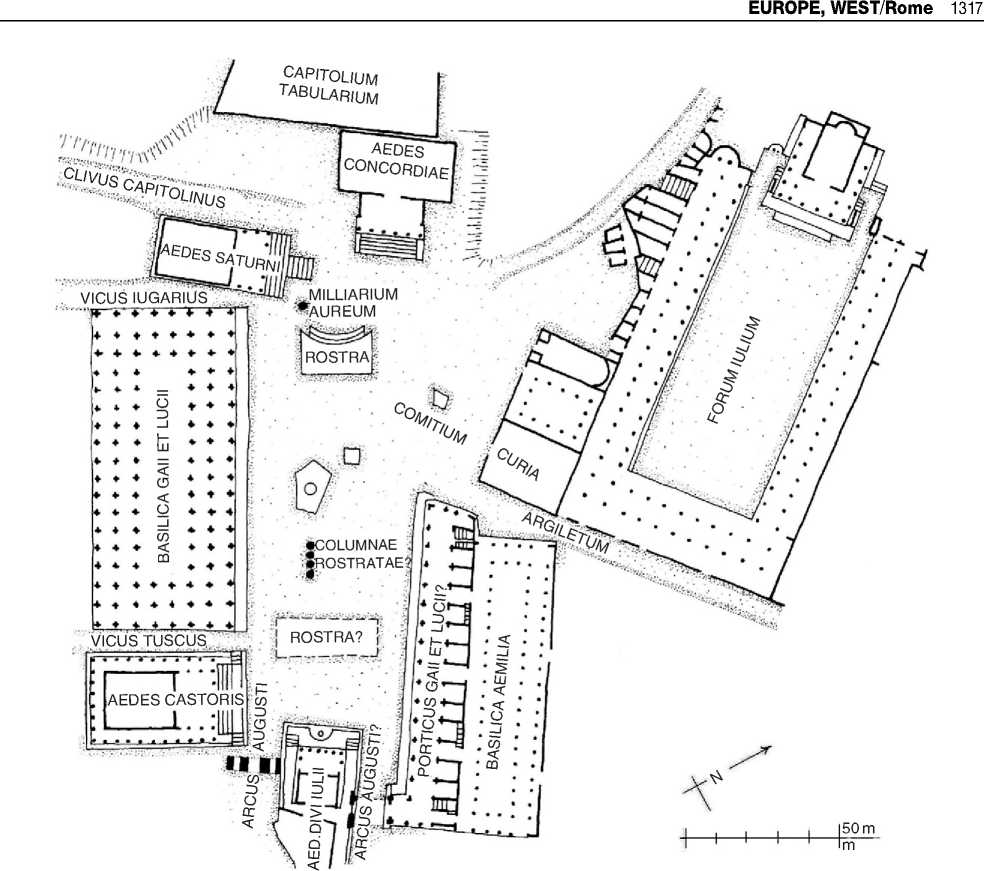Roman Archaeology raises specific problems inherent to the nature of the city itself and that of the

Figure 13 The baths of Diocletian: reconstruction.
Discipline - the ubiquitous presence of both visible and nonvisible remains in a living modern capital, the complexity of a stratification covering a period of over 1300 years, the quantity of modern demolitions, as well as the mass of objects, artworks, and structures which survived without context.
The extensive excavations on the occasion of the 2000 Jubilee in the heart of the city provided revolutionary elements for the ancient topography of Rome, while huge works for the construction of an underground-line are now to begin. These particular events and challenges led to the development of new research fields and documentation methods (particularly remarkable are the attempts to integrate all the types of data available and to provide threedimensional reconstructions of Ancient Rome) but they also impose radical choices in terms of conservation, preservation, and presentation of the recently excavated structures. They invite a new reflection on the opportunities and the limitations of interpreting archaeological evidence: although new categories of objects have recently reached the status of historical sources, producing an increasing mass of potentially informative material, the discontinuity of these sources and the distortion between ancient testimonies and concrete findings from different periods spread out in various sectors of the city remains intact, as well as the problem of interpretation of these testimonies. The preserved structures say almost nothing of their effective use. On the other hand, the always more accurate and sophisticated collecting of data from recent excavations as well as their re-contextualisation will certainly permit a reduction in the degree of fragmentation available information and allow future scholars to re-question this material in the light of new elements and new research issues.
See also: Asia, West: Roman Eastern Colonies; Cities, Ancient, and Daily Life; Civilization and Urbanism, Rise of; Classical Archaeology; Europe, South: Greek Colonies; Medieval and Post-Medieval; Ritual, Religion, and Ideology; Urban Archaeology.




 World History
World History









